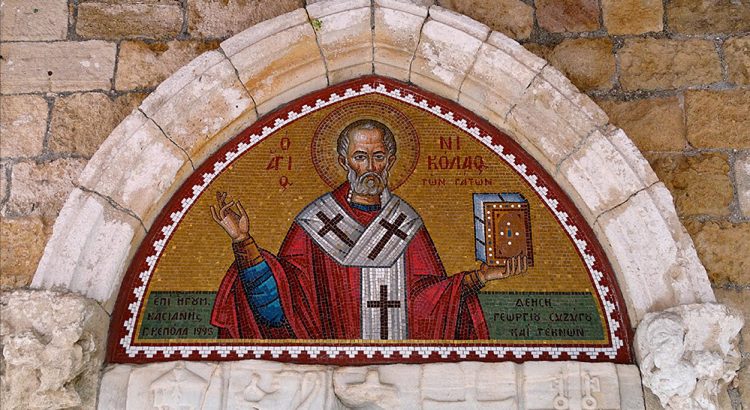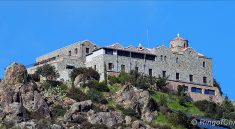Helena, mother of Constantine, landed in Cyprus in 327AD at the newly built monastery of St. Nicolas, founded in 325AD, on her way back from Jerusalem. She found the monastery, located at the tip of the Akrotiri Peninsula overrun with poisonous snakes.
Due to the extended drought of seventeen years on the island, the local residents could not keep the water-seeking snakes from invading their homes and fields. The whole area around the salt lake was abandoned because of the venomous snakes.
St. Helena took pity on them and arranged with the Governor Kalokeros for 1,000 cats to be brought to the island from Egypt and Palestine to kill the reptiles. Soon the whole area became known as ‘Capo Gata’, the Cape of Cats.
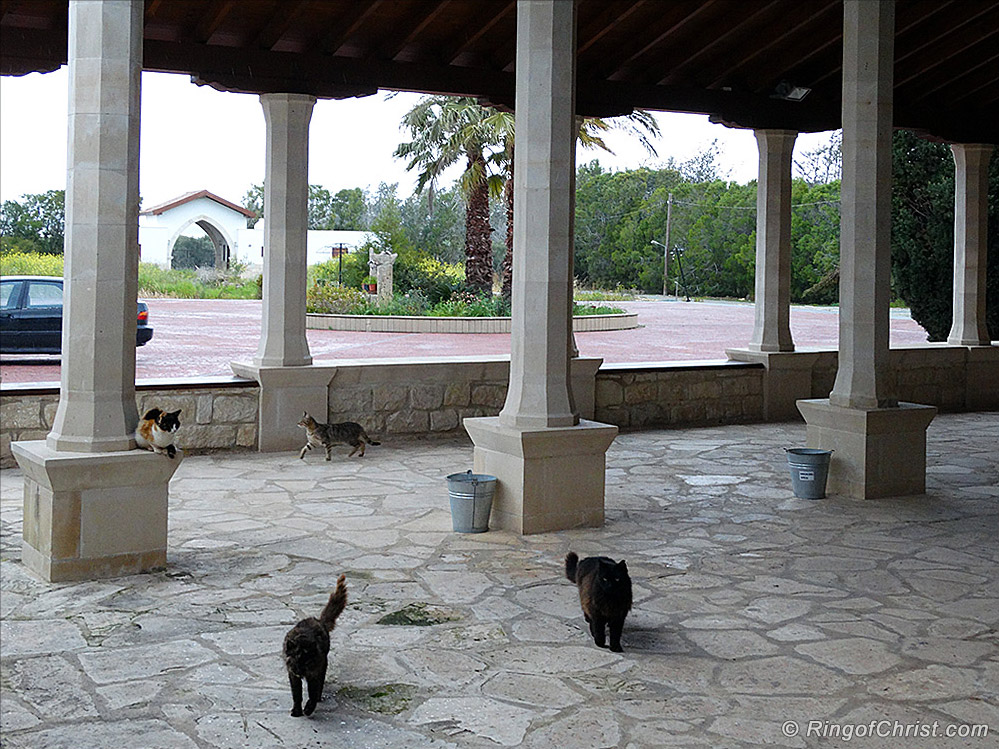
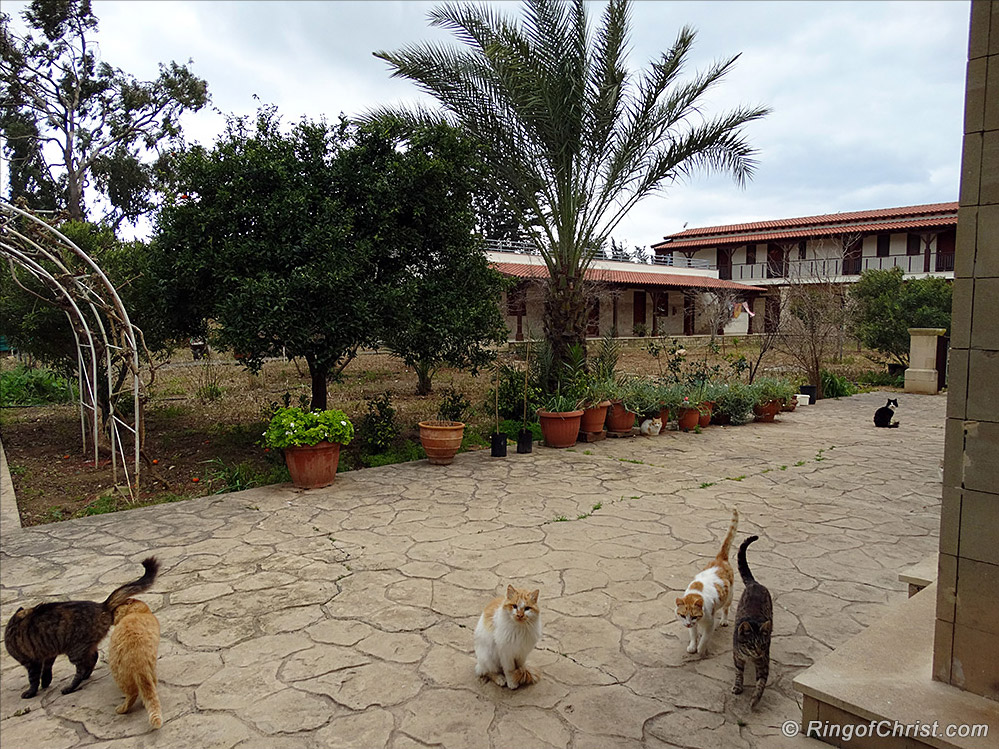
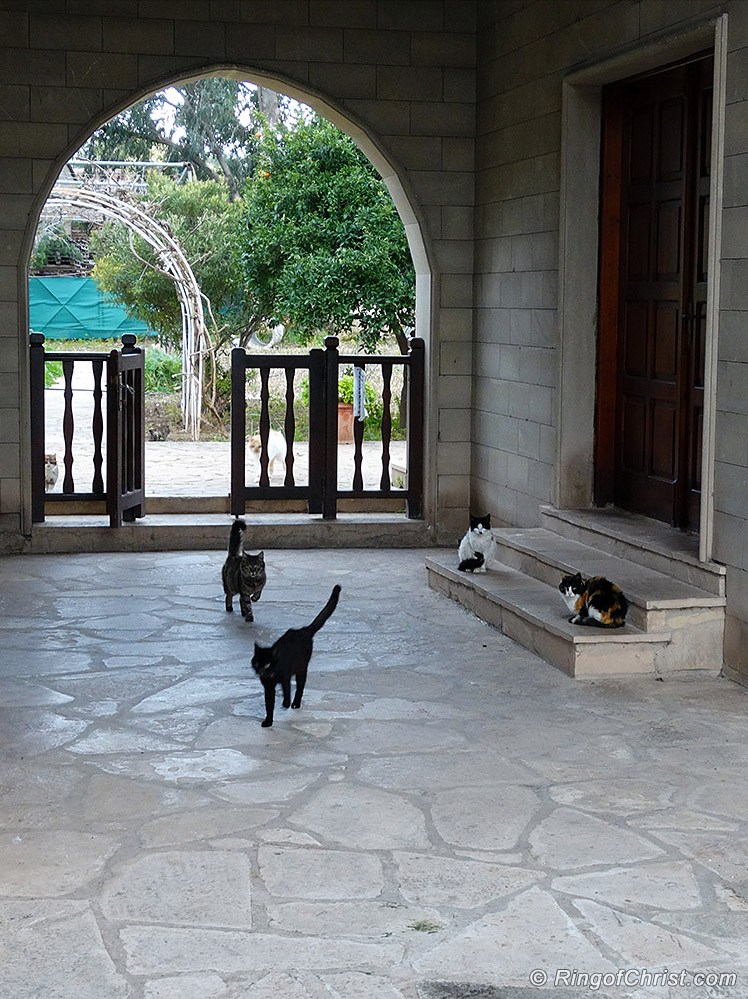

The monks conditioned the cats with two bells, one which signaled feeding time, the other signaled hunting time. The cats did their jobs hunting and killing snakes and keeping them in check, though it took a toll on the cats.
People returned to their homes and livelihood, fishing. Each St. Nicolas Feast Day, the catch is donated to the monastery for their well being.
Monks remained in the monastery until 1570 when the Ottoman Empire conquered the island. Nuns returned in 1983 to care for the hundreds of cats.
A Venetian monk who visited the monastery during the 1300’s, described them as “scarred, missing various body parts, some completely blind.” The cats where still guardians of the area.
Today the monastery is still a sanctuary for cats the wander around freely. There is a private cat sanctuary nearby that houses hundreds of cats in an enclosed area.
The Department of Antiquities renovated the monastery in 1960; some parts date to the 13th Century and other sections to the original 4th Century monastery.
In 1983, it became a convent once again which today houses four nuns who are dedicated to taking care of the cats and painting icons.
The monastery is constructed of rough-hewed stone inside and out. The mosaic icon of St. Nicolas is over the entry to the basilica. The coats of arms date to the medieval period of the church and were used in the restoration.
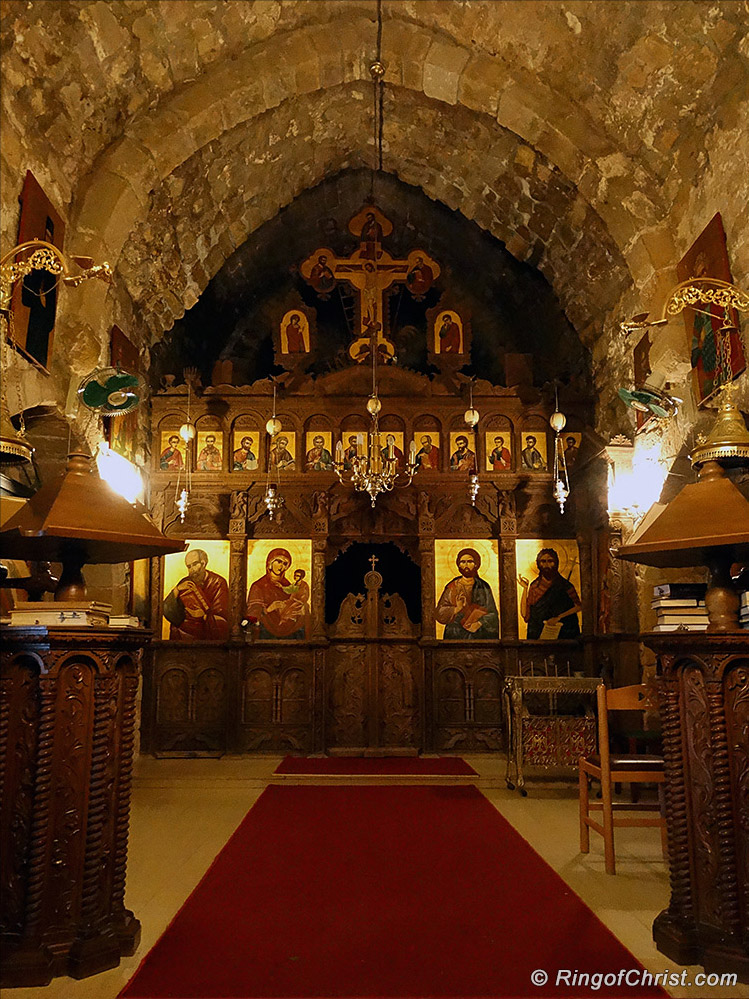
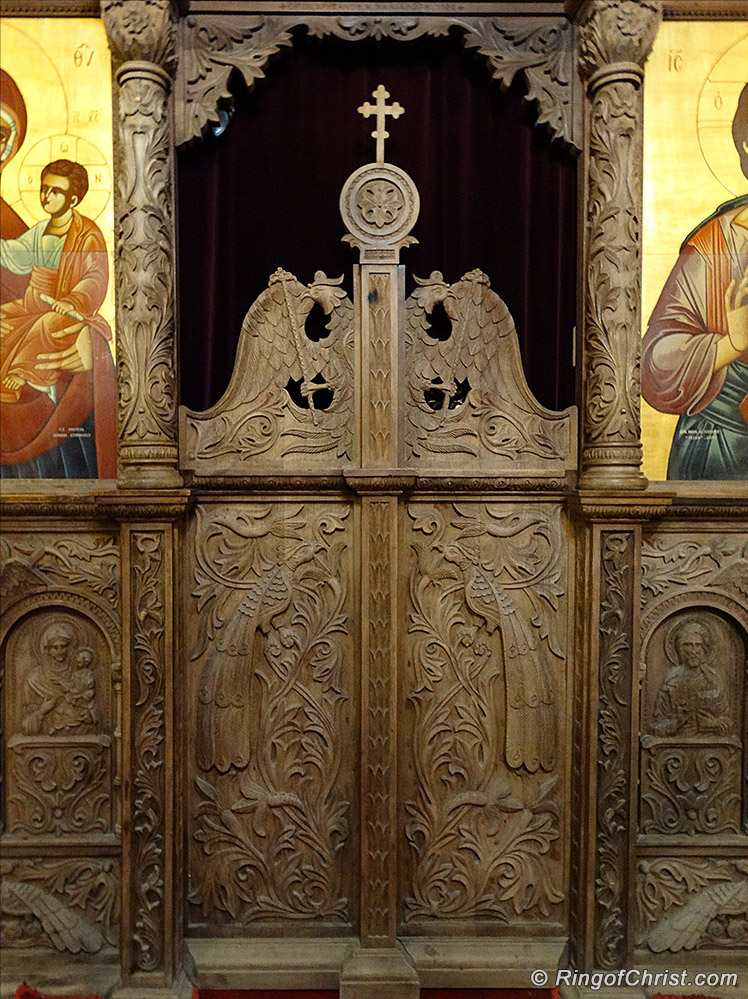
The rustic interior of the natural stone vaulted basilica is filled with icons. The iconostasis is intricately carved natural wood without the golden gilt, which is common to most iconostasis in Cyprus.
St. Nicolas of the Cats Monastery is a serene, secluded refuge at the tip of the Akrotiri Peninsula.
